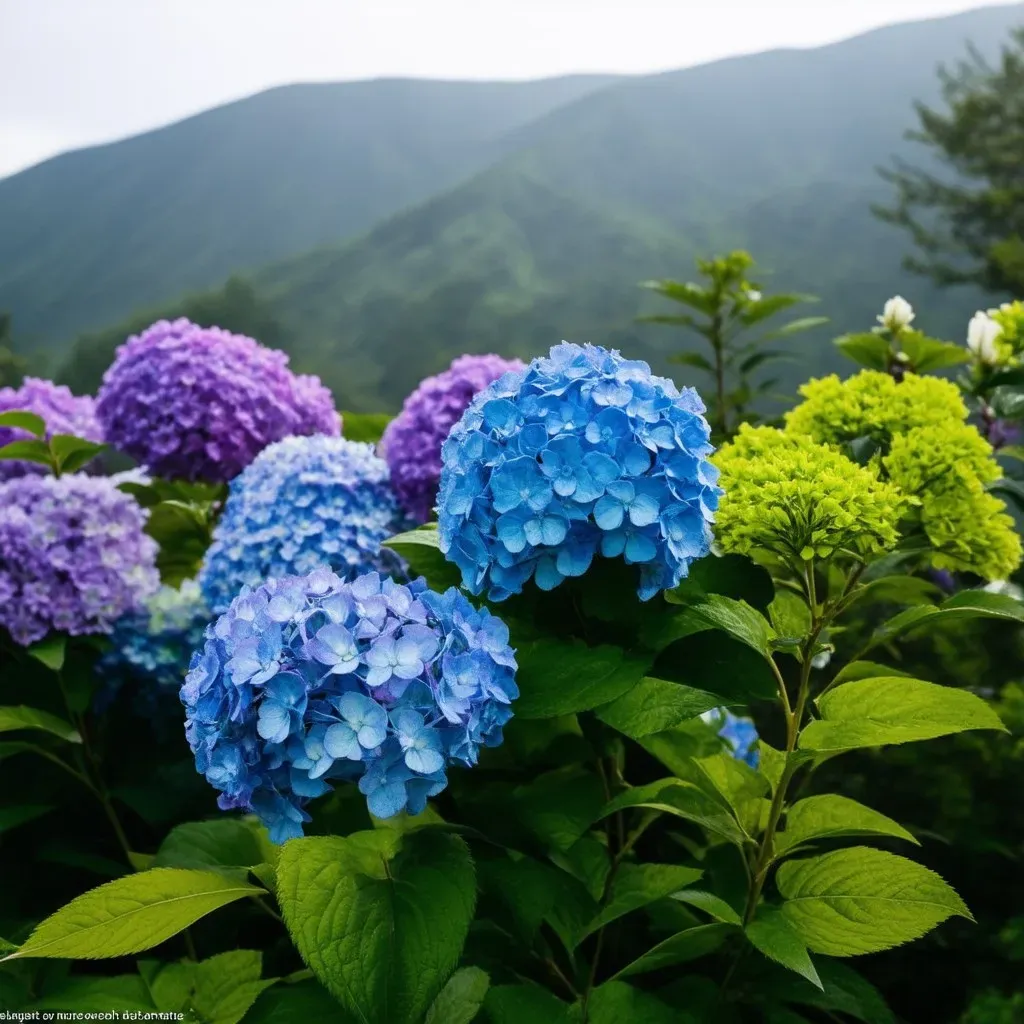Mountain hydrangeas, scientifically known as hydrangea serrata, are a stunning and versatile shrub native to the mountainous regions of Korea and Japan. Renowned for their ability to flourish in less-than-ideal conditions, mountain hydrangeas present colorful flowers and glossy foliage that can elevate any garden landscape.
Characteristics of Mountain Hydrangea
Mountain hydrangeas are unique among the vast variety of hydrangeas, possessing several distinctive traits:
-
Size & Growth Habits: Mountain hydrangeas typically grow to a height ranging from 2 to 4 feet and can spread about 3 to 4 feet wide. This modest size makes them ideal for various garden settings, including borders, containers, and small spaces.
-
Flower Types: The blooms are often characterized as lacecap flowers, consisting of a cluster of small flowers surrounded by larger, petal-like florets. Flower color is influenced by soil pH: acidic soils yield blue flowers, while alkaline conditions produce pink hues.
-
Hardiness: Mountain hydrangeas are notably hardy, typically rated for USDA zones 5-9, which means they can withstand harsher climates than their bigleaf counterparts.

Flowering Season
Mountain hydrangeas bloom from late spring through summer and may even provide a second wave of flowers in the fall, especially when pruned correctly. Here’s a brief overview of their flowering pattern:
| Season | Activity |
|---|---|
| Spring | Initial bloom |
| Summer | Continuous bloom |
| Fall | Possible second bloom |
Cultivating Mountain Hydrangea
Growing mountain hydrangeas can be both rewarding and enjoyable, given their relatively low maintenance needs compared to Other Hydrangea Types. Here’s how to effectively cultivate them.
Soil Requirements
Mountain hydrangeas thrive in well-draining, organic-rich soils. The ideal pH for these hydrangeas is slightly acidic to neutral (5.5 to 7.0). Regular soil testing can help gardeners amend their soils accordingly to achieve vibrant blooms.
Watering Guidelines
These plants require moderate watering. The soil should remain consistently moist without becoming soggy. During dry spells, extra watering may be necessary, but over-watering can lead to root rot.
Sunlight Preferences
Mountain hydrangeas prefer dappled sunlight to partial shade. Too much direct sunlight can stress the plant and cause wilting, while too much shade may diminish blooming.

Fertilization
Hydrangeas benefit from a balanced, slow-release fertilizer applied in spring when new growth begins. Fertilizers high in phosphorus encourage more vibrant flower production. A sample fertilization schedule might look like this:
| Month | Fertilization Action |
|---|---|
| March | Apply balanced slow-release fertilizer |
| June | Reapply a slow-release fertilizer |
| August | Light feeding to promote fall blooms |
Pruning Technique
Pruning mountain hydrangeas is important for maintaining their shape and encouraging new growth. The best time for pruning is late winter or early spring before new growth begins. Focus on removing dead or damaged wood to enhance air circulation.
Important Pruning Tips:
- Use sharp, clean pruning shears.
- Cut back around one-third of the previous year’s growth.
- Shape plants as needed, but avoid excessive pruning.
Reference Video
Common Problems and Solutions
Despite their hardiness, mountain hydrangeas can face some common challenges. Here are a few issues gardeners might encounter, along with solutions:
Pests and Diseases
- Aphids: These small insects can cause leaf curling and distortion. Control with insecticidal soap or neem oil.
- Powdery Mildew: A fungal disease that appears as white powder on leaves. It can be managed through proper spacing and allowing airflow.
Fading Flower Colors
To keep flower colors vibrant:
- Amend Soil pH: Use aluminum sulfate to encourage blue flowers, or lime to enhance pink hues.
- Regular Watering: Inadequate watering can affect flower color.
Popular Cultivars of Mountain Hydrangea
Mountain hydrangeas come in numerous attractive cultivars, each offering unique colors and features. Below are some of the most popular options:
| Cultivar | Description |
|---|---|
| ‘Bluebird’ | Produces deep blue flowers, known for blooming reliability. |
| ‘Tuff Stuff’ | A reblooming variety, ideal for continuous color throughout the season. |
| ‘Tiny Tuff Stuff’ | Compact version, perfect for small gardens or containers. |

FAQ About Mountain Hydrangea
1. Do mountain hydrangeas prefer sun or shade?
Mountain hydrangeas thrive in partial shade but can tolerate some sun exposure in the morning.
2. How often should I water mountain hydrangeas?
Water them to keep the soil consistently moist; generally, this means checking once or twice a week during dry periods.
3. Will mountain hydrangeas change color?
Yes, mountain hydrangea colors can shift with changes in soil pH; gardeners often adjust their soil to manipulate flower color.
4. When is the best time to prune my mountain hydrangeas?
Prune in late winter or early spring before new growth begins.
5. Are mountain hydrangeas deer-resistant?
While deer may nip at many plants, mountain hydrangeas are generally less appealing to them.
For additional information regarding care and tips for growing hydrangeas, you may visit Proven Winners.
Mountain hydrangeas stand out not only because of their beauty but also their resilience, making them ideal for various garden styles. Their rich colors, adaptability, and manageable care requirements ensure that they will thrive in diverse conditions, making them a favorite among garden enthusiasts. Boost your landscape with mountain hydrangeas for a touch of elegance and a splash of color all season long.

